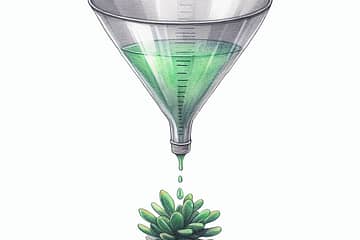If you can’t measure it, you can’t manage it.
These are the words of Peter Drucker, famed management consultant, educator, and author whose many writings contributed to the philosophical and practical foundations of the modern corporation.
Many of the principles we take for granted today are part of Drucker’s legacy. He argued that businesses should focus on meeting customer needs instead of simply selling products – an indisputable concept in the modern business world. He advocated for businesses to decentralize decision-making and empower employees to make decisions at the lowest possible level, improving efficiency and productivity. In 1959, recognizing in a changing workforce that more jobs required knowledge and creativity, he coined the term “knowledge worker.” These principles are so entrenched in our understanding of what makes organizations work, that they hardly seem innovative by today’s standards – but in Drucker’s time, they were indeed quite disruptive.

Another of Drucker’s contributions is the concept of management by objectives, or MBOs. This is the process of setting goals and objectives for employees and then measuring their progress towards those goals. A sales organization presents two perspectives on the topic. On one hand, goal-setting and measurement are delightfully simple: either the deal close is achieved and the revenue collected, or not. On the other hand, the complex process of achieving deal closure contains countless milestones within.
A wide array of prospecting activities provide us with benchmarks toward early deal progress. The same is true for key qualification milestones, such as an initial discovery meeting or an in-depth product demo. As the salesperson advances through the sales cycle, new milestones appear, such as an invitation to sign up in a procurement system, or the receipt of a redlined contract. Even the presence of a key client-side executive in a meeting can be captured as a leading indicator toward eventual deal closure.
All these milestones represent some form of progress toward the simple outcome of closing the deal. All can be captured and analyzed for their unique ability to predict or even influence a positive outcome. Sales leaders can then reverse engineer this data to set meaningful targets, for example number of outbound calls or scheduled meetings per week. Not only does this approach drive results, Drucker believed that MBOs were an effective way to motivate and empower employees.
Key Questions To Measure Activity For Sales Performance
For virtually every type of sales cycle, there are key leading indicators that help us understand the sales team’s progress toward closing a deal. Cutting corners on measuring those indicators can lead to some negative consequences.
Without an understanding of which sales activities (e.g. outbound emails, discovery calls, proposals, etc.) are most effective at generating revenue, it becomes a challenge to allocate resources effectively. You’ll have less visibility into where you can improve your sales performance, leading to missed opportunities and lost revenue. Goal setting becomes a challenge: without granular sales activity data, it becomes more likely that unrealistic goals for the sales team will lead to frustration and low morale. Performance management is also more complicated, as the lack of data makes it difficult to hold your sales team accountable for their performance.
A founder or leader of a Seed stage company will often ask themselves certain questions to address this challenge:
- How are we forecasting sales today?
- How do we monitor and update our forecast?
- What are the assumptions and limitations of our chosen methodology?
- What is the size and quality of our sales pipeline?
- What are the conversion rates at each stage of the pipeline?
- What are our average deal sizes and win rates?
- When execs or investors want us to tell the future, how do we tell this story?
- How do we balance hard data and intuition, to make confident projections and control our narrative?
Measuring Activity For Sales Performance In Social Impact
In mission-driven companies, it is important to measure the impact of sales activities to make a confident projection of future revenues. The industry of sustainable fashion serves as a great case study, along a few dimensions:
Allocating resources to pressing social concerns. The buy-one, give-one (B1G1) model is common in sustainable fashion, whereby a company donates one item for every item sold. In doing so, they create social value while generating financial profit. This model was popularized by the shoe company TOMS, which donates one pair of shoes to a child in need for every pair of shoes sold. Eyeglasses maker Warby Parker has used the B1G1 model with great success, too. Businesses don’t usually grow, however, by simply giving things away – it takes a very precise estimate of future revenues and profits to execute such a strategy.
Building trust and credibility with customers and stakeholders. When a particular social initiative aligns to the values of a brand’s loyalists, charitable giving or partnerships with aligned organizations can create massive amounts of goodwill. This helps to lower customer retention costs (and potentially customer acquisition costs). Patagonia is a good example. They sell clothing and gear for outdoor enthusiasts, and through their “1% for the Planet” program they donate 1% of sales revenues to environmental organizations. Without a sales forecast, this commitment would be a much bigger gamble.
Measuring progress toward social impact goals. Many sustainable fashion brands are using recycled materials, such as plastic bottles, cotton scraps, and even discarded fishing nets, to create new clothing and accessories. Everlane is a good example. Like any company, their sales forecasts are an integral part of managing their supply chain. With a clear picture on how they will generate revenue and profit in the future, they can negotiate with factories to pursue Fair Labor Association (FLA) certification or raise the quantity of sustainable materials used in production.
Our Approach To Forecasting Sales Performance
We start by gathering and analyzing data from your CRM and accounting software, to understand trends in sales revenue by business unit, product, team/salesperson, region, and time period. We’re looking for trends and patterns to help identify drivers of past success, as well as factors likely to impact sales in the future.
The choice of a forecasting method is not one to be taken lightly. You can compare and contrast a few methods to arrive at the best decision.
Sales pipeline analysis – This sales forecasting method relies on a snapshot of business opportunities in the present, to arrive at an educated guess of near-term sales performance. Mitigating variables such as lead qualification rate, rate of opportunity creation, average deal size, sales stage duration, and of course close rate all inform a probabilistic view of each opportunity’s contribution to the sales forecast. This is generally the simplest approach, but also the most error-prone.
Time series analysis – This sales forecasting method uses historical sales data to identify trends and patterns, and then projects them into the future. When data is collected and cleaned (removing outliers and missing values), patterns in the data are isolated (for example, seasonal trends) and other fluctuations can be smoothed out using techniques of statistical analysis. The accuracy of the forecast is monitored over time, with updates to the model implemented as needed.
Causal analysis – This approach to sales forecasting is similar to time series analysis, but also takes into account externalities beyond the immediate sales pipeline. For example, a major marketing campaign could accelerate opportunity qualification, while an economic downturn could depress average deal sizes. While more complex than time series analysis, it can also be more accurate.
Whichever methodology is appropriate, a number of standard principles apply.
We’ll evaluate the CRM for hygiene in both data entry and reporting. If opportunities present themselves for more efficient data capture, or elimination of critical blind spots, it is imperative to resolve those items up-front. We look to audit every possible metric, at every stage of the sales funnel, that could influence the sales forecast – and push for consensus on which metrics are in scope for the analysis. When the finished product is shipped, the work is not done – we’ll test the sales forecast retroactively to measure its accuracy vs. eventual actualized figures. Once leadership is comfortable with the forecast, the final step is to establish alignment between the forecast and the revenue target-setting process, as well as sales compensation agreements.
Solutions For Forecasting Sales Performance
Revenue is unpredictable. Lack of visibility into future revenue growth creates blind spots which limit productivity and interfere with your efforts to attract customers and investors.
Create a crystal ball which gives you line-of-sight into revenue growth.
Our Process
- Gather and audit all available sales performance data & augment with industry intelligence (e.g. seasonality, buying patterns, typical sales cycle)
- Review current reporting practices & assumptions/methodologies for assigning revenue to open opportunities
- Define scope of reporting, incl. refresh cadence, segmentation by product/business unit
- Identify confidence levels for any internal data (quantitative & qualitative) feeding into sales forecast
- Establish an interim testing period to retroactively compare forecast accuracy to actualized figures, revisiting methodology as necessary

Deliverables
- Initial pipeline overview by sales stage, including analysis of win rate, deal size and cycle duration
- Custom dashboards of approved forecasting methodology to existing CRM/business intelligence systems
- Sensitivity analysis to evaluate model’s response to changes in key assumptions/behaviors
- Testing manual to oversee accuracy tests for 1-2 quarters following deployment
Impact
- Improved sales performance through informed prioritization of revenue opportunities
- More efficient resource allocation & mitigated risk in decision making
- Greater credibility with finance team, C-suite, board and outside investors
- Improved sales team morale via more rigorous target setting
Click for more information on how to forecast sales performance, or get in touch.
Other Revenue Growth Challenges For Seed Stage Companies
This discussion about how to forecast sales performance is one post in an 8-part series about revenue growth challenges for seed stage companies. See below for how to address other common revenue challenges:



0 Comments